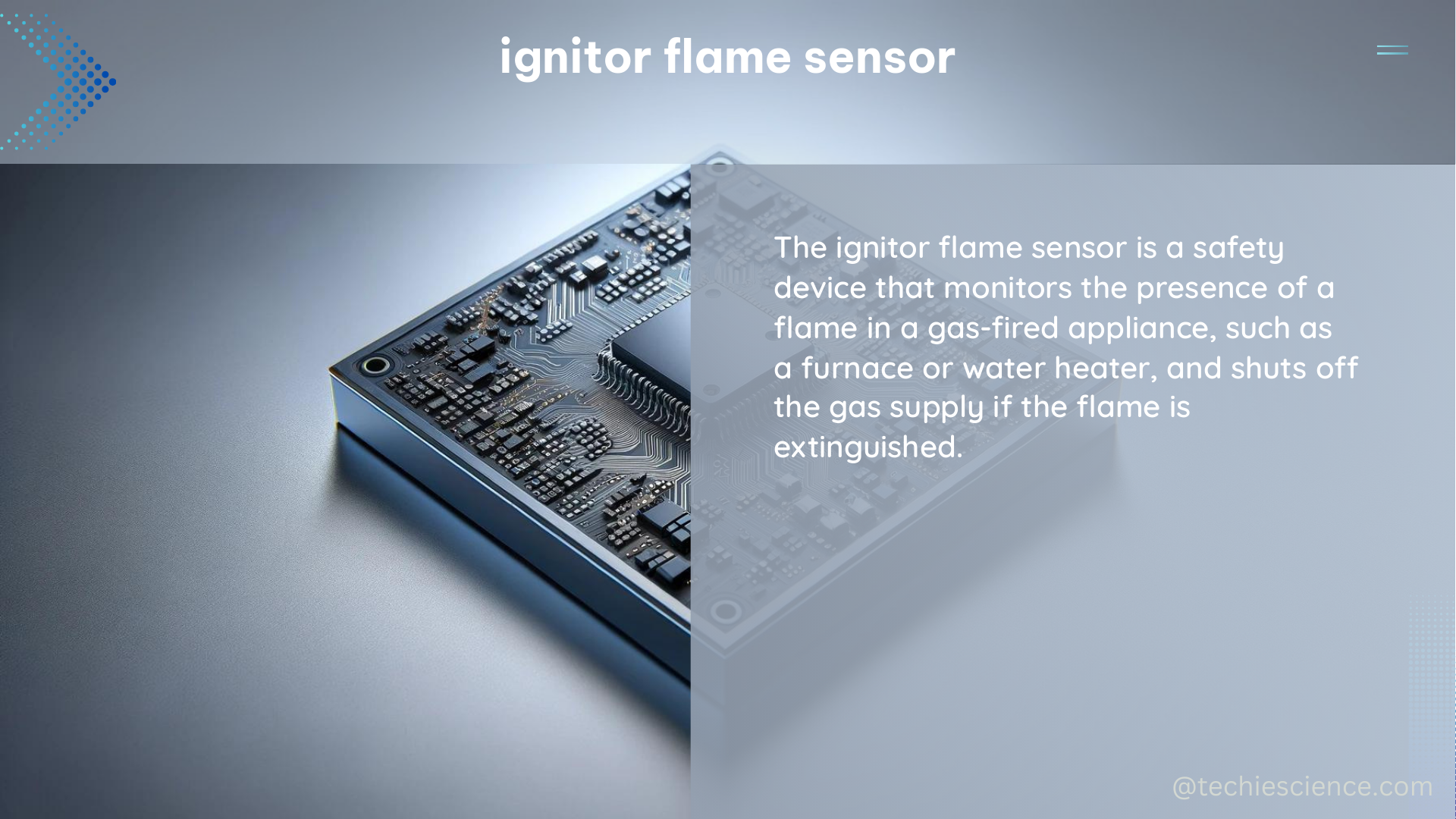The ignitor flame sensor is a critical component in various industrial and commercial systems, including burners, gas turbines, and heating appliances. This advanced device precisely measures the presence and characteristics of a flame, providing essential feedback to the control system to ensure safe and efficient operation. In this comprehensive guide, we will delve into the intricate details of ignitor flame sensors, exploring their technical specifications, advanced capabilities, and the crucial role they play in maintaining the integrity of complex systems.
Rapid Flame Detection: Milliseconds to Safety
At the heart of the ignitor flame sensor’s functionality is its ability to detect the presence of a flame with lightning-fast speed. These sensors can identify the ignition of a flame in less than 10 milliseconds, a remarkable feat that allows the control system to respond immediately to changes in the flame status. This rapid response time is crucial in preventing accidents and ensuring the safe operation of the system.
Wide Temperature Tolerance: Thriving in Extreme Conditions

Ignitor flame sensors are designed to withstand a wide range of operating temperatures, from as low as -40°F (-40°C) to as high as 392°F (200°C). This exceptional temperature range allows these sensors to function effectively in diverse environments, from frigid industrial settings to scorching industrial furnaces. This versatility is a testament to the engineering prowess behind these devices, ensuring reliable performance in even the most challenging conditions.
Precision Calibration: Ensuring Accurate Measurements
Each ignitor flame sensor is individually calibrated, and the calibration data is meticulously stored in the controller software. This attention to detail guarantees that the sensor’s measurements are accurate and reliable, providing the control system with the precise information it needs to maintain optimal performance. The calibration process takes into account various factors, such as sensor sensitivity, response time, and environmental conditions, to ensure that the sensor’s output is consistently accurate.
Flame Spread and Thermal Consistency: Monitoring the Flame’s Behavior
Ignitor flame sensors possess the remarkable ability to measure the spread and thermal consistency of a flame across a wide range of temperatures and flame types. This capability is essential for ensuring the safe and efficient operation of the system, as it allows the control system to monitor the flame’s behavior and make adjustments as needed to maintain optimal performance.
Sensor Waveforms for Target Detection: Differentiating Flames from Other Heat Sources
Ignitor flame sensors can detect and analyze sensor waveforms to differentiate between a legitimate flame and other sources of heat or light. This advanced feature enables the sensor to accurately identify the target flame, preventing false alarms and ensuring that the control system responds only to the presence of the desired flame. By analyzing the unique waveform signatures of the flame, the sensor can reliably distinguish it from other heat sources, such as sunlight or electrical sparks.
Non-RF Detection: Overcoming Electromagnetic Interference
In environments where radio frequency (RF) interference may be a concern, ignitor flame sensors can employ non-RF detection methods to reliably identify the presence of a flame. This capability is crucial in industrial settings or areas with high electromagnetic activity, where RF-based detection could be compromised. By utilizing alternative detection techniques, these sensors can maintain their accuracy and reliability, even in the face of challenging electromagnetic conditions.
Advanced Diagnostics and Monitoring: Ensuring Optimal Performance
Ignitor flame sensors are equipped with advanced diagnostic and monitoring capabilities that provide valuable insights into the system’s performance. These sensors can continuously monitor various parameters, such as flame intensity, stability, and ignition patterns, and relay this information to the control system. This real-time data allows the control system to make informed decisions, optimize the system’s operation, and quickly identify and address any potential issues that may arise.
Conclusion
The ignitor flame sensor is a remarkable piece of engineering, designed to ensure the safe and efficient operation of a wide range of industrial and commercial systems. With its lightning-fast flame detection, wide temperature tolerance, precision calibration, and advanced diagnostic capabilities, this sensor plays a crucial role in maintaining the integrity and reliability of complex systems. By understanding the technical details and capabilities of ignitor flame sensors, system designers, operators, and maintenance personnel can leverage these advanced devices to achieve optimal performance, minimize the risk of accidents, and enhance the overall safety and efficiency of their operations.
References:
- Environmental Investigations Standard Operating Procedures and Measurable Physical/Chemical Definitive Data. https://nepis.epa.gov/Exe/ZyPURL.cgi?Dockey=9101WW0R.TXT
- Advanced Control Systems for Aircraft Powerplants. https://apps.dtic.mil/sti/tr/pdf/ADA084845.pdf
- FY 2021 budget – Justification Book – Department of Defense. https://comptroller.defense.gov/Portals/45/Documents/defbudget/fy2021/budget_justification/pdfs/03_RDT_and_E/RDTE_Vol3_OSD_RDTE_PB21_Justification_Book.pdf

The lambdageeks.com Core SME Team is a group of experienced subject matter experts from diverse scientific and technical fields including Physics, Chemistry, Technology,Electronics & Electrical Engineering, Automotive, Mechanical Engineering. Our team collaborates to create high-quality, well-researched articles on a wide range of science and technology topics for the lambdageeks.com website.
All Our Senior SME are having more than 7 Years of experience in the respective fields . They are either Working Industry Professionals or assocaited With different Universities. Refer Our Authors Page to get to know About our Core SMEs.